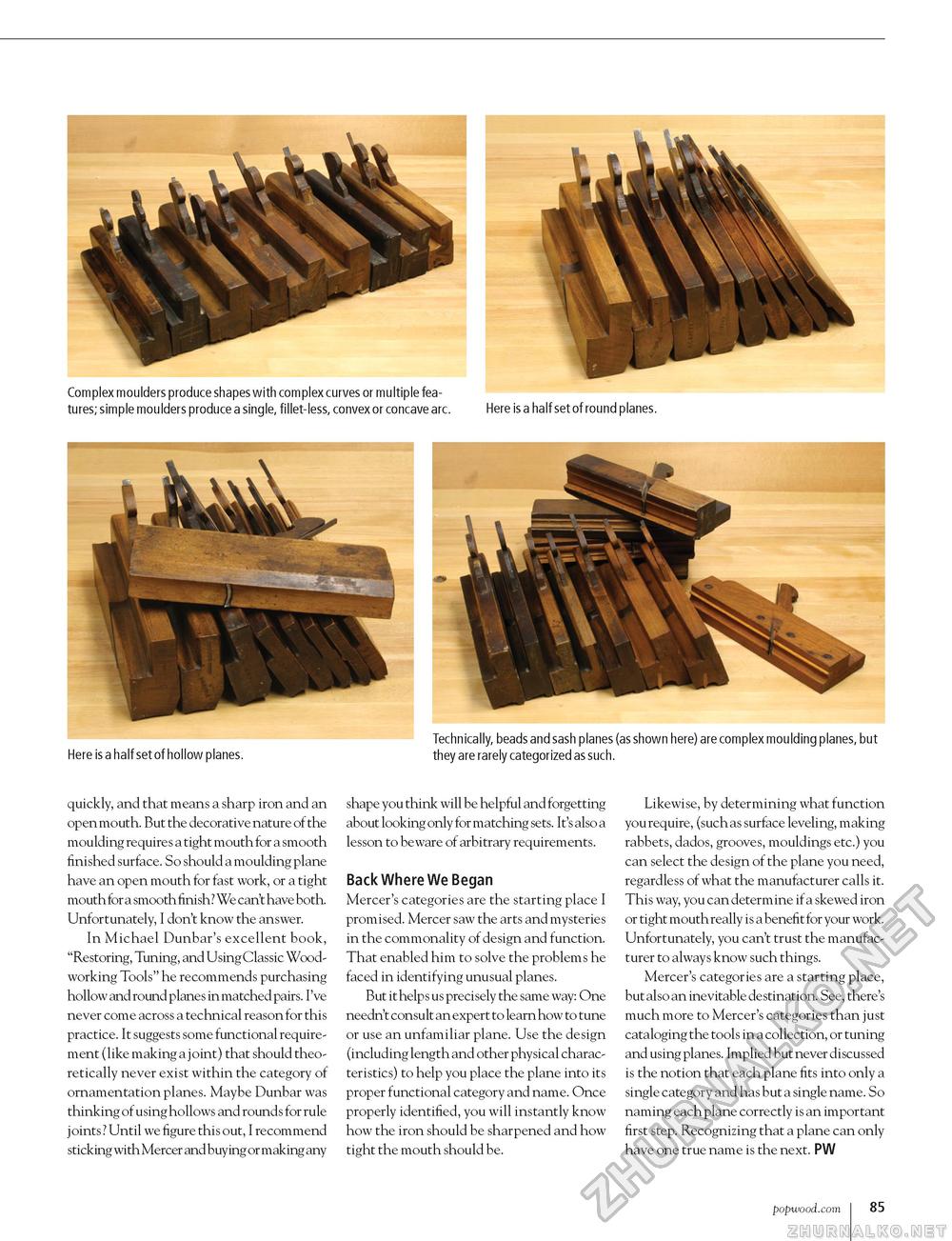Popular Woodworking 2005-08 № 149, страница 87
Complex moulders produce shapes with complex curves or multiple features; simple moulders produce a single, fillet-less, convex or concave arc. Here is a half set of round planes. Technically, beads and sash planes (as shown here) are complex moulding planes, but Here is a half set of hollow planes. they are rarely categorized as such. quickly, and that means a sharp iron and an open mouth. But the decorative nature of the moulding require s a tight mouth for a smooth finished surface. So should a moulding plane have an open mouth for fast work, or a tight mouth for a smooth finish? We can't have both. Unfortunately, I don't know the answer. In Michael Dunbar's excellent book, "Restoring, Tuning, and Using Classic Woodworking Tools" he recommends purchasing hollow and round planes in matched pairs. I've never come across a technical reason for this practice. It suggests some functional requirement (like making a joint) that should theoretically never exist within the category of ornamentation planes. Maybe Dunbar was thinking of using hollows and rounds for rule joints? Until we figure this out, I recommend sticking with Mercer and buying or making any shape you think will be helpful and forgetting about looking only for matching sets. It's also a lesson to beware of arbitrary requirements. Back Where We Began Mercer's categories are the starting place I promised. Mercer saw the arts and mysteries in the commonality of design and function. That enabled him to solve the problems he faced in identifying unusual planes. But it helps us precisely the same way: One needn't consult an expert to learn how to tune or use an unfamiliar plane. Use the design (including length and other physical characteristics) to help you place the plane into its proper functional category and name. Once properly identified, you will instantly know how the iron should be sharpened and how tight the mouth should be. Likewise, by determining what function you require, (such as surface leveling, making rabbets, dados, grooves, mouldings etc.) you can select the design of the plane you need, regardless of what the manufacturer calls it. This way, you can determine if a skewed iron or tight mouth really is a benefit for your work. Unfortunately, you can't trust the manufacturer to always know such things. Mercer's categories are a starting place, but also an inevitable destination. See, there's much more to Mercer's categories than just cataloging the tools in a collection, or tuning and using planes. Implied but never discussed is the notion that each plane fits into only a single category and has but a single name. So naming each plane correctly is an important first step. Recognizing that a plane can only have one true name is the next. PW popwood.com I 85 |








